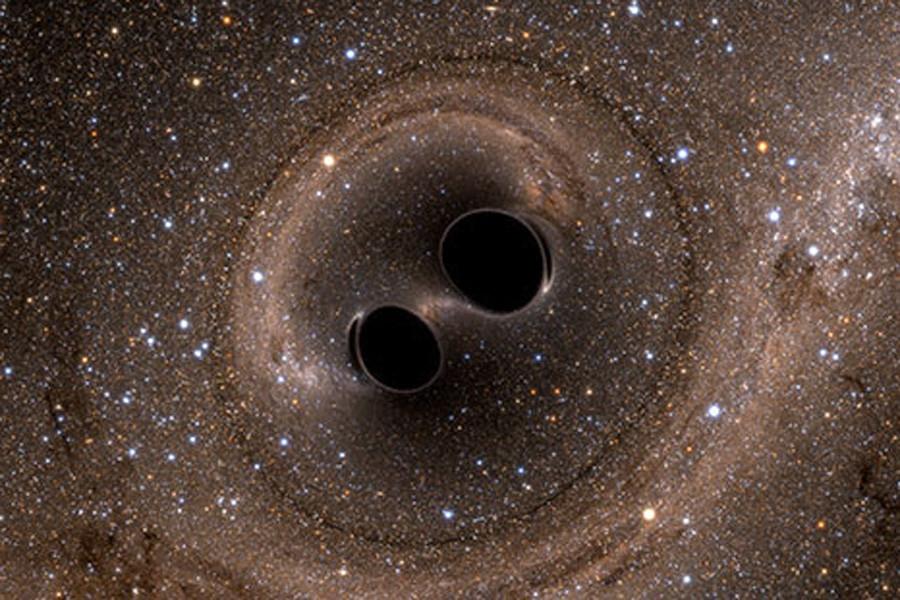Northwestern researchers part of historic gravitational waves discovery
The union of two black holes results in a massive black hole, causing gravitational waves. Northwestern scientists were among the group of researchers who detected the waves, confirming a prediction of Albert Einstein’s theory of general relativity.
February 11, 2016
Northwestern researchers are part of the first team of scientists to detect gravitational waves, a phenomenon first predicted by Albert Einstein, the University announced Thursday in a news release.
The NU team — part of the project with the Laser Interferometer Gravitational-Wave Observatory Scientific Collaboration and the Virgo Collaboration in Europe — was led by physics and astronomy Prof. Vicky Kalogera and comprises her, physics and astronomy Prof. Shane Larson, two postdoctoral fellows, three graduate students and several undergraduate students.The discovery was a culmination of more than two decades of work, according to the release.
The gravitational waves, which are ripples in the fabric of spacetime, originated from the union of two black holes, resulting in one, massive black hole, according to the release. The event released more energy than anything previously observed in the universe.
The waves confirm a prediction of Einstein’s theory of general relativity. They were first detected Sept. 14, three days after twin LIGO detectors were turned on following a five year renovation period, according to the release.
Kalogera, an expert on black hole formation in binary systems, spent many hours checking data, running simulations and writing scientific papers after she noticed a binary black hole represented by gravitational wave signals in the LIGO data, according to the release. She said in the release she is thrilled to be part of the discovery.
“To detect something in the first few days after turning on our new detectors and to have a detection of an unexpected source — ‘heavy’ binary black holes — is just amazing,” Kalogera said.
Larson told The Daily the goal of creating an experiment using LIGO detectors was to find gravitational waves from astrophysical objects. He said the two black holes, each about 30 times the mass of sun, were detected due to their own gravity, not because of their effect on other objects in the universe.
“The fact that they are 30 times the mass of the sun is very interesting astrophysically, because these black holes cannot just be formed by ordinary stars,” Larson said. “There is something else that is going on that created them.”
He said the detectors are not at their full potential yet, and the goal is to increase their capability over the next few years. Researchers hope to let the LIGO detectors run continuously for one year to observe many astrophysical events, Larson said.
“When that happens, we will be able to take all those events together and try to understand something about the universe that we didn’t understand before,” he said. “This is the real beginning of gravitational wave astronomy.”
Weinberg junior Leah Perri, who joined Kalogera’s lab the summer after her freshman year, said the discovery is very exciting.
“Looking back on this opportunity, it’s incredible to be part of an international collaboration,” she said. “It’s super exciting that this (discovery) is fundamentally going to change the way that we do astronomy.”
Email: peterkotecki2018@u.
Twitter: @peterkotecki


